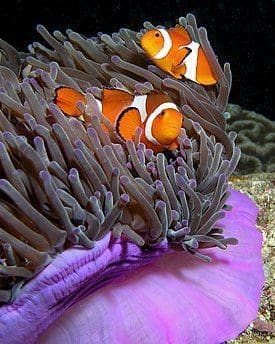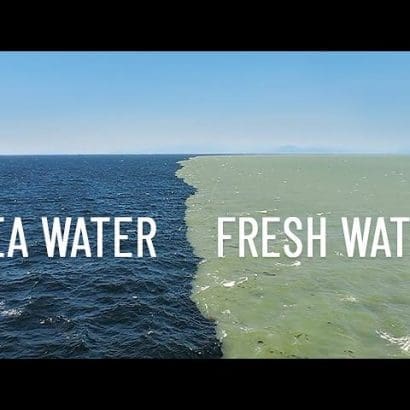
In this captivating exploration of the marine world, we will delve into the realm of the largest creatures to have ever inhabited the oceans. From prehistoric giants to modern-day marine mammals, we will uncover which of these magnificent beings holds the title of the largest marine animal to have ever existed.
Contents
he Majestic Cetaceans.🐟
Cetaceans, the majestic marine mammals, are known for being the largest animals in the world that inhabit the oceans today. Among them, the blue whale, the common rorqual, and the sperm whale stand out as true marvels of nature. In this section, we will focus on these remarkable creatures, delving into their impressive dimensions and highlighting their critical role in the marine ecosystem.
Cetaceans are a diverse group of marine mammals that includes whales, dolphins, and porpoises. They have adapted remarkably to life in the water, with streamlined bodies, powerful tails, and specialized adaptations for swimming and hunting.
The Blue Whale:
The blue whale (Balaenoptera musculus) is the largest animal ever known to have lived on Earth. Reaching lengths of up to 100 feet (30 meters) and weighing as much as 200 tons, these gentle giants hold a prominent place in the record books. Their enormous size and distinctive bluish-gray coloration make them a truly awe-inspiring sight in the open seas.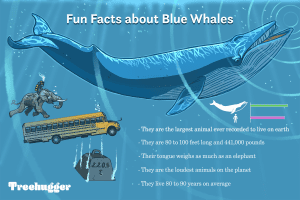
Blue whales primarily feed on tiny shrimp-like animals called krill, consuming several tons of krill each day during the feeding season. Despite their massive size, they are filter feeders, using their baleen plates to strain vast amounts of krill from the water.
The conservation of blue whales has become a global priority due to the threats they face, including ship strikes, entanglement in fishing gear, and ocean pollution. Understanding their migratory patterns and behaviors has been crucial in implementing conservation efforts to protect these magnificent creatures.
The Common Rorqual:
The common rorqual, also known as the fin whale (Balaenoptera physalus), is another impressive cetacean found in oceans around the world. These whales can reach lengths of up to 80 feet (24 meters) and weigh up to 80 tons. Their sleek bodies, featuring a white underside and a distinctive V-shaped head, make them easily distinguishable.
Fin whales are highly skilled hunters, using a feeding technique known as “lunge feeding.” They lunge through schools of fish or swarms of krill, engulfing large amounts of prey in one swift motion. Their efficient feeding strategy allows them to consume vast quantities of food, sustaining their massive size and energy requirements.
Similar to the blue whale, fin whales are listed as endangered due to various human-induced threats. International efforts are being made to protect and conserve their habitats, ensuring the survival of these majestic rorquals for generations to come.
The Sperm Whale:
The sperm whale (Physeter macrocephalus) is the largest of the toothed whales and possesses one of the most extensive brains among all animal species. Males can grow up to 60 feet (18 meters) long, while females are usually smaller. These whales are well-known for their iconic squared-off head, which houses the largest brain on Earth.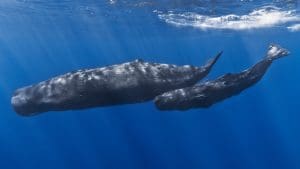
Sperm whales have a diverse diet, preying on deep-sea squid and occasionally fish. They are formidable divers, capable of descending to great depths in search of food. Interestingly, their ability to produce a valuable waxy substance called “ambergris” has historically made them targets for whaling.
Conservation efforts have led to a partial recovery of sperm whale populations in some regions, but they still face threats from pollution, climate change, and entanglement in fishing gear.
The Prehistoric Colossi.🐟
In this section, we will explore some of the largest marine animals that once roamed the ancient oceans. These prehistoric giants, though long extinct, continue to captivate our imagination and provide valuable insights into the history of life on Earth. Among these magnificent creatures, the ichthyosaurs and plesiosaurs take center stage, boasting impressive features and remarkable sizes. Join us as we delve into the ancient past and uncover how these colossal beings became legends of bygone eras.
-
The Ichthyosaurs:
Ichthyosaurs were a group of marine reptiles that thrived during the Mesozoic era, approximately 250 to 90 million years ago. Their name, which means “fish lizards,” is a fitting descriptor of their appearance and lifestyle. Ichthyosaurs were fully adapted to life in water, possessing streamlined bodies, paddle-like limbs, and a tail fin that aided in swift aquatic locomotion.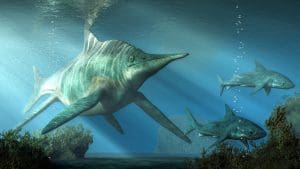
These incredible creatures varied greatly in size, with some species measuring only a few feet long, while others, like the Shastasaurus, reached staggering lengths of up to 69 feet (21 meters). Their elongated snouts, large eyes, and sharp teeth indicate their specialized adaptations for hunting and capturing prey in the ancient seas.
-
The Plesiosaurs:
Plesiosaurs were another remarkable group of marine reptiles that coexisted with ichthyosaurs during the Mesozoic era. These enigmatic creatures boasted an intriguing body structure, with a unique combination of long necks, sturdy bodies, and powerful flippers. This distinctive design allowed them to move gracefully through the water while hunting for their prey.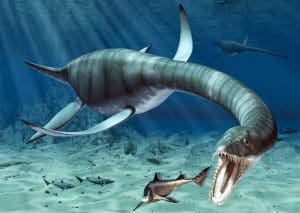
Ranging in size from a few feet to over 40 feet (12 meters), plesiosaurs exhibited an astonishing variety of species, each adapted to different ecological niches. Some had short necks and large heads, ideal for snapping at nearby prey, while others had elongated necks, enabling them to reach distant food sources in the water.
An Undisputed Winner: The Blue Whale.
In this section, we will dedicate our focus to delve deeper into the world of the blue whale, revered as the largest marine animal of all time. As we unravel the secrets of this magnificent creature, we will discuss its astounding length, weight, habitat, and diet. Moreover, we will highlight the critical role it plays in marine biodiversity and the ongoing conservation efforts aimed at protecting this iconic species.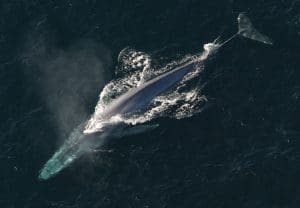
-
General Information about the Blue Whale:
The blue whale (Balaenoptera musculus) is a true colossus of the ocean, belonging to the baleen whale family. Adult blue whales can grow to an astonishing length of up to 100 feet (30 meters) and weigh as much as 200 tons, making them the largest animals on Earth. Their sleek bodies are characterized by a mottled blue-gray coloration, accentuating their majestic presence in the open seas.
Blue whales can be found in oceans around the world, inhabiting both polar and temperate regions. They are known for their incredible migratory patterns, often traveling long distances to find abundant food sources and suitable breeding grounds.
-
Dimensions and Diet:
The sheer size of the blue whale is mind-boggling. Their tongues alone can weigh as much as an elephant, and their hearts can be as large as a small car. Despite their massive proportions, blue whales are filter feeders. They primarily feed on tiny crustaceans known as krill, which they consume in astonishing quantities during feeding season. An adult blue whale can consume up to 4 tons of krill in a single day!
To feed, blue whales open their colossal mouths and engulf large volumes of water filled with krill. They then use their baleen plates, which act as a filter, to trap the krill while expelling water. This efficient feeding strategy enables them to sustain their immense size and energy requirements.
-
Habitat and Conservation:
Blue whales are known to have a wide distribution, often migrating between feeding and breeding grounds. They are commonly spotted in nutrient-rich regions where krill populations thrive, such as polar waters during the summer months.
Despite their global distribution, blue whale populations have faced severe threats in the past, primarily due to commercial whaling. In the 20th century, they were hunted to the brink of extinction, leading to international efforts to ban whaling and protect these gentle giants.
The Importance of Protecting and Conserving Marine Habitats.
Marine habitats encompass a vast and intricate web of ecosystems that support a myriad of marine species, including fish, mammals, and coral reefs. These habitats are essential for maintaining the delicate balance of the oceans and play a vital role in providing resources and services that sustain life on Earth. In this section, we will explore the significance of safeguarding and preserving marine habitats to ensure the health and well-being of our planet’s marine environments.
In conclusion, the conservation of marine habitats is of utmost importance for the well-being of our planet and its inhabitants. These diverse ecosystems support a wide array of marine species, contributing to the overall biodiversity and ecological balance of the oceans. By protecting these habitats, we safeguard the resources that sustain life, provide coastal protection against natural disasters, and contribute to climate regulation.

